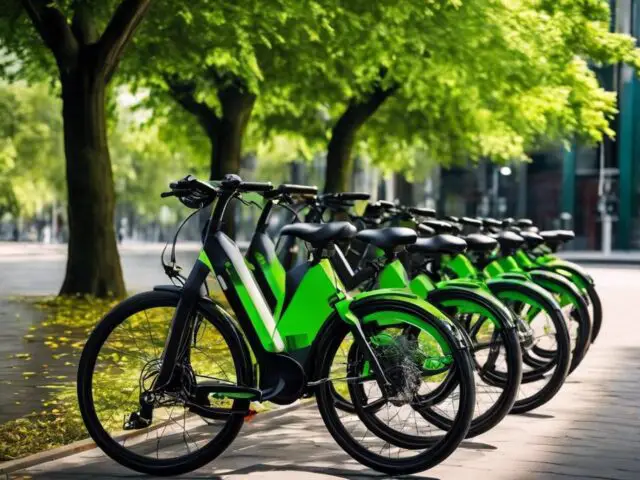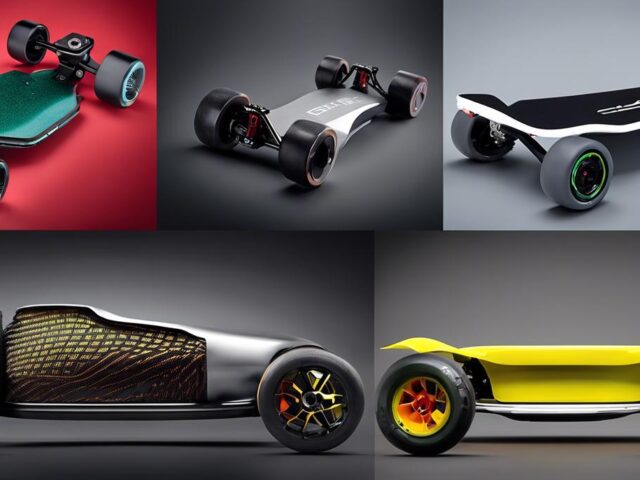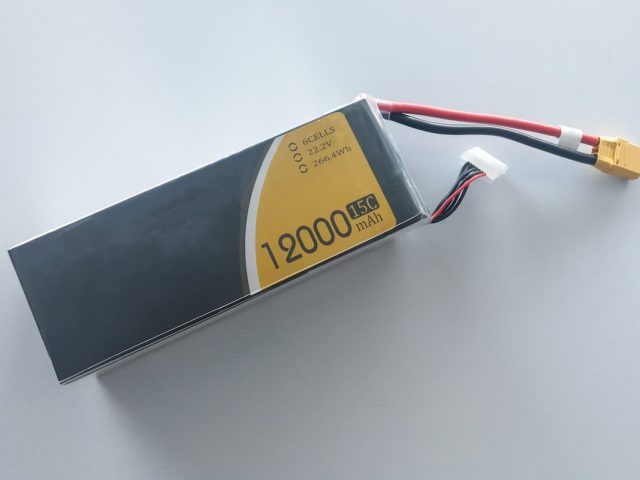Cycling has long been a popular form of transportation and recreation, but with the advancements in technology, it has undergone a major transformation. Electric bikes, or e-bikes, have taken the world by storm, offering a more efficient and eco-friendly way to ride. At the heart of this revolution lies the lithium-ion battery. The lithium-ion battery is a groundbreaking development in e-bike technologies that has significantly improved the field. These powerful and lightweight batteries have not only enabled the rise of e-bikes but have also made them a more practical and convenient option for many cyclists.
Understanding Lithium-ion Battery Technology
The surge in popularity of e-bikes is hardly surprising when you consider the increasing awareness about environmental sustainability and a collective push towards a healthier lifestyle. Lithium-ion batteries are the perfect solution that the e-bike industry needed.
Lithium-ion batteries have revolutionized the world of electric bikes by providing a lightweight and efficient power source. To truly grasp the impact of lithium-ion battery technology, it is important to understand how these batteries work.
At the core of a lithium-ion battery is a complex combination of chemicals and materials that allow for the movement of lithium ions between the positive and negative electrodes. This movement of ions generates an electric current that powers the e-bike. Unlike traditional lead-acid batteries, which rely on chemical reactions to produce electricity, lithium-ion batteries are rechargeable and have a higher energy density.
The key components of a lithium-ion battery include the cathode, anode, electrolyte, and separator. The cathode is typically made of a lithium compound, such as lithium cobalt oxide or lithium iron phosphate, which provides the positive electrode. The anode is usually made of graphite or silicon, serving as the negative electrode. The electrolyte, commonly a liquid or gel, allows for the movement of lithium ions. Finally, the separator prevents the cathode and anode from coming into direct contact.
One of the main advantages of lithium-ion batteries is their high energy density, meaning they can store a significant amount of energy in a relatively small and lightweight package. This makes them ideal for electric bikes, where reducing weight is crucial for optimizing performance and range. Additionally, lithium-ion batteries have a low self-discharge rate, allowing them to retain their charge for longer periods without being used.
However, lithium-ion batteries are not without their drawbacks. They are more expensive to manufacture compared to other battery types, which can contribute to the overall cost of e-bikes. Furthermore, they require careful handling and charging to prevent damage or safety hazards, such as overheating or exploding.
Overall, an understanding of lithium-ion battery technology is essential in appreciating the advancements made in the e-bike industry. The lightweight and efficient nature of these batteries has propelled electric bikes to new heights, making them a viable alternative to traditional bicycles and even cars. As technology continues to evolve, it is exciting to imagine the future innovations and improvements that lithium-ion batteries will bring to the world of cycling.

Comparative Analysis: Lithium-ion vs Lead-Acid Batteries
Lithium-ion and lead-acid batteries are two of the most common types of rechargeable batteries used in a variety of applications, including electric vehicles, power tools, and portable electronics. Here is a comparison of the two types of batteries:
| Characteristic | Lithium-ion | Lead-acid |
|---|---|---|
| Energy density | High | Low |
| Charging speed | Fast | Slow |
| Lifespan | Long | Short |
| Self-discharge rate | Low | High |
| Memory effect | No | Yes |
| Cost | High | Low |
| Safety | Good | Fair |
| Environmental impact | Medium | Low |
Lithium-ion batteries offer a number of advantages over lead-acid batteries, including:
- Higher energy density: Lithium-ion batteries can store more energy per unit weight than lead-acid batteries, making them ideal for applications where weight and size are important.
- Faster charging: Lithium-ion batteries can charge much faster than lead-acid batteries, typically in a few hours or less.
- Longer lifespan: Lithium-ion batteries have a longer lifespan than lead-acid batteries, typically lasting for several years.
- No memory effect: Lithium-ion batteries do not suffer from the memory effect, which can reduce the capacity of lead-acid batteries over time.
However, lithium-ion batteries are also more expensive than lead-acid batteries. Additionally, lithium-ion batteries can be dangerous if they are not properly manufactured or used. There is a risk of fire or explosion if the battery is punctured, overheated, or overcharged.
Lead-acid batteries are less expensive than lithium-ion batteries and are also more widely available. However, lead-acid batteries offer a number of disadvantages, including:
- Lower energy density: Lead-acid batteries have a lower energy density than lithium-ion batteries, meaning they can store less energy per unit weight.
- Slower charging: Lead-acid batteries charge much slower than lithium-ion batteries, typically taking several hours or more to fully charge.
- Shorter lifespan: Lead-acid batteries have a shorter lifespan than lithium-ion batteries, typically lasting for only a few years.
- Memory effect: Lead-acid batteries suffer from the memory effect, which can reduce the capacity of the battery over time.
Lead-acid batteries are also heavier than lithium-ion batteries, making them less ideal for applications where weight and size are important.
Which type of battery is right for you?
The best type of battery for you will depend on your specific needs and requirements. If you are looking for a battery with a high energy density, fast charging speed, and long lifespan, then a lithium-ion battery is the best choice. However, if you are on a budget or need a battery that is widely available, then a lead-acid battery may be a better option.
It is important to note that both lithium-ion and lead-acid batteries require proper care and maintenance to ensure safe operation and long life. Be sure to follow the manufacturer’s instructions for charging, discharging, and storing your battery.

The Application of Lithium-ion Batteries in E-Bikes
Electric bikes, or e-bikes, have gained popularity in recent years, thanks in large part to the advancements in lithium-ion battery technology. These batteries have revolutionized the world of cycling by providing a reliable and efficient power source for e-bikes.
One of the key applications of lithium-ion batteries in e-bikes is their ability to provide assistance to the rider. With an electric motor powered by a lithium-ion battery, cyclists can easily tackle hills, ride longer distances, and overcome physical limitations. This makes e-bikes a practical transportation option for commuting, running errands, and even recreational purposes.
The application of lithium-ion batteries in e-bikes has also led to the development of various assist modes. Riders can choose between different levels of assistance, such as eco, normal, or sport mode, depending on their desired level of exertion and speed. This versatility allows e-bike riders to customize their riding experience to fit their needs and preferences.
Additionally, lithium-ion batteries have made it possible for e-bikes to have longer ranges and faster charging times. The high energy density of these batteries allows e-bikes to travel farther distances on a single charge, making them a viable alternative to traditional bicycles and even cars. Furthermore, the quick charging capabilities of lithium-ion batteries mean that riders can spend less time waiting for their batteries to recharge and more time enjoying their rides.
The application of lithium-ion batteries in e-bikes has also opened up new opportunities for alternative transportation in urban areas. With the rising concern over air pollution and traffic congestion, e-bikes offer a sustainable and efficient solution. These bikes allow riders to navigate through traffic more easily, reduce their carbon footprint, and contribute to cleaner and greener cities.
Lithium-ion batteries have found wide application in the world of e-bikes, enabling riders to travel longer distances, overcome physical limitations, and contribute to sustainable transportation. With continuous advancements in battery technology, the future looks bright for e-bikes and their role in transforming the way we commute and explore our cities.
Benefits and Drawbacks of Lithium-ion Batteries in E-Bikes
Here is a quick breakdown of the Pros and Cons of Lithium-Ion Batteries:
Pros of lithium-ion batteries:
- High energy density: Lithium-ion batteries have a high energy density, meaning they can store a lot of energy in a relatively small and lightweight package.
- Fast charging: Lithium-ion batteries can charge quickly, typically in a few hours or less.
- Low self-discharge rate: Lithium-ion batteries have a low self-discharge rate, meaning they can hold their charge for a long time even when not in use.
- Long lifespan: Lithium-ion batteries have a long lifespan, typically lasting for several years.
- No memory effect: Lithium-ion batteries do not suffer from the memory effect, which can reduce the capacity of other types of batteries over time.
Cons of lithium-ion batteries:
- Cost: Lithium-ion batteries are more expensive than other types of batteries, such as lead-acid batteries.
- Safety: Lithium-ion batteries can be dangerous if they are not properly manufactured or used. There is a risk of fire or explosion if the battery is punctured, overheated, or overcharged.
- Environmental impact: The mining and processing of the materials used in lithium-ion batteries can have a negative impact on the environment.
Lithium-ion batteries have revolutionized the world of electric bikes, offering numerous benefits that make them a preferred power source for e-bike riders. However, like any technology, they also have some drawbacks that are worth considering. In this section, we will explore the benefits and drawbacks of using lithium-ion batteries in e-bikes.
One of the most significant benefits of lithium-ion batteries is their high energy density. This means that they can store a large amount of energy in a small and lightweight package. As a result, e-bikes powered by lithium-ion batteries have longer ranges and can travel farther distances on a single charge. This extended range is especially beneficial for commuters, who can confidently rely on their e-bikes to get them to work and back without worrying about running out of power.
Another advantage of lithium-ion batteries is their fast charging capabilities. Compared to other battery technologies, lithium-ion batteries can be charged more quickly, allowing riders to spend less time waiting and more time riding. This is particularly useful for those who have busy schedules or limited charging options.
Lithium-ion batteries are also known for their low self-discharge rate. Unlike other battery types that lose their charge over time, lithium-ion batteries can retain their charge for longer periods when not in use. This means that riders can leave their e-bikes unused for weeks and still come back to find a significant amount of charge remaining. This is especially convenient for occasional riders or those who may not have access to a charging station every day.
However, it is important to acknowledge the drawbacks of lithium-ion batteries as well. One of the main concerns is their higher cost compared to other battery types. Lithium-ion batteries are more expensive to manufacture, which can contribute to the overall cost of e-bikes. This may make them less accessible to some riders who are on a tighter budget.
Additionally, lithium-ion batteries require careful handling and charging to prevent damage or safety hazards. Overcharging, extreme temperatures, or physical damage can lead to reduced battery life, performance issues, or even safety risks. Riders must follow the manufacturer’s instructions and take proper care of their lithium-ion batteries to ensure longevity and safety.

Impact on the Future of Cycling: Sustainable, Efficient, and Healthful
The impact of lithium-ion batteries on the future of cycling is vast and promising. With their lightweight and efficient nature, these batteries have paved the way for a more sustainable, efficient, and healthful future of cycling.
Lithium-ion batteries have made electric bikes a more sustainable mode of transportation. As the world becomes more conscious of the need to reduce carbon emissions, e-bikes offer a greener alternative to traditional vehicles. By replacing gasoline-powered vehicles with e-bikes, individuals can significantly decrease their carbon footprint and contribute to cleaner air in their communities. With lithium-ion batteries powering these bikes, riders can travel longer distances without relying on fossil fuels, thus promoting a more sustainable and eco-friendly mode of transportation.
Furthermore, lithium-ion batteries have enhanced the efficiency of cycling. By providing assistance to the rider, these batteries enable individuals to overcome physical limitations and tackle challenging terrains with ease. Commuting to work, running errands, or even exploring the city becomes more efficient and time-effective with the assistance of an e-bike. Riders can cover longer distances in less time, arriving at their destinations feeling fresh and energized. The efficient use of lithium-ion batteries in e-bikes allows individuals to optimize their travel time and make the most of their day.
In addition to being sustainable and efficient, the use of lithium-ion batteries in e-bikes also promotes a healthful lifestyle. Cycling, whether on a traditional bicycle or an e-bike, offers numerous health benefits, including improved cardiovascular health, increased muscle strength, and reduced stress levels. The availability of electric assistance provided by lithium-ion batteries makes cycling more accessible to individuals of all ages and fitness levels. Even those who may have physical limitations can enjoy the benefits of cycling and incorporate physical activity into their daily lives. E-bikes powered by lithium-ion batteries promote a more active and healthful lifestyle, allowing individuals to reap the rewards of exercise while enjoying the freedom and convenience of cycling.

Here are some tips for safely using lithium-ion batteries in electric bikes:
- Always use the charger that came with your battery or a compatible charger.
- Do not overcharge or over-discharge your battery.
- Avoid exposing your battery to extreme temperatures.
- Store your battery in a cool, dry place when not in use.
- If you notice any damage to your battery, such as a crack or a bulge, stop using it immediately and contact the manufacturer.
Lithium-ion batteries have revolutionized the world of e-bikes, making these electric bicycles more practical, powerful, and accessible than ever before. Their high energy density, relatively light weight, and long lifespan make them the ideal choice for e-bike propulsion. As the technology continues to evolve, we can expect even more significant advancements in lithium-ion battery performance and efficiency, further enhancing the e-bike riding experience. From extended ranges to faster charging and reduced maintenance, e-bike riders can reap the benefits of this remarkable battery technology. With lithium-ion batteries, e-bikes are not just a mode of transportation; they represent a sustainable and exciting way to explore, commute, and stay active, paving the way for a greener and more enjoyable future on two wheels.
Helpful Links
For all your RC Questions, Click HERE
If you are interested in RC cars and trucks, RC World has you covered.
For RC boats and watercraft, check these articles out.
For all your RC Airborne endeavors, we have everything you need.
Why Does My Remote Control Vehicle Have a Mind of Its Own?
I loves remote control vehicles growing up and would run them until they broke in most cases, Washington state is wet and thats a bad combo for a…
Unfolding the Revolution: How Drone Delivery Works
In today’s rapidly advancing technological landscape, drone delivery is emerging as a breakthrough in the realm of logistics and supply chains. Employing sophisticated software, artificial intelligence (AI), GPS,…
E-Bike Lifecycle: Reduce Carbon Emissions
In an age where climate change looms large and the quest for sustainable living becomes increasingly pressing, electric bicycles (e-bikes) emerge as a beacon of hope in the…
Ultimate Guide to Durable Electric Skateboard Decks
When selecting the best approach for building a deck that’s both eye-catching and durable, understanding the significant roles played by material choice and construction techniques is crucial. This…
Guide to Choosing Electric Skateboard Motors
Choosing the right motor for your electric skateboard is paramount to achieving the ideal blend of speed, power, and efficiency that matches your riding style. The world of…
Boost Your Fitness: E-Bike Interval Training Tips
Embracing e-Bike interval training could be the ultimate game-changer in your quest to skyrocket your fitness levels. Before diving headfirst into it, it’s imperative to grasp the basics…
How Do RC Boats Work?
If you’re considering purchasing an RC boat, you may be wondering: how do RC boats work? Well, this article will discuss the parts of RC boats, from the…
How To Build An FPV Drone: A Beginner’s Guide
Embracing the exhilarating world of FPV (First Person View) drone flight opens up new areas of exploration and adventure. From hobbyists to professional drone racers, understanding the fundamentals…
Why Choose to Upgrade Your RC Car to a LiPo Battery
You might have heard of LiPo batteries that has taken the tech world by storm. As a RC car owner, the battery is understandably half of your concern….










